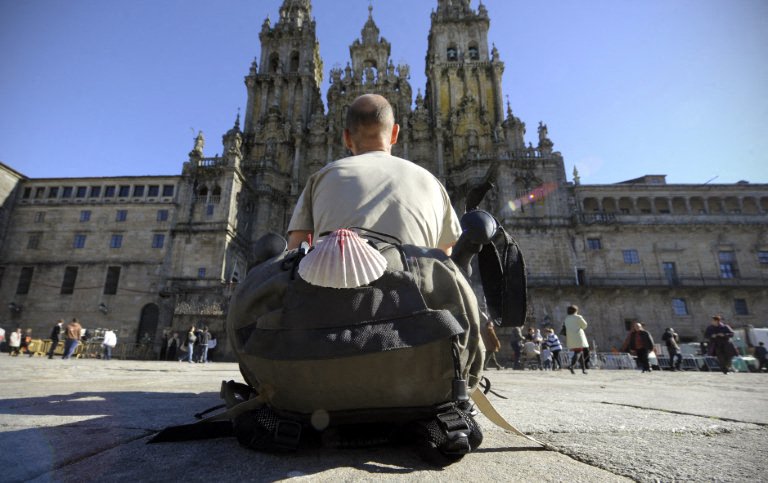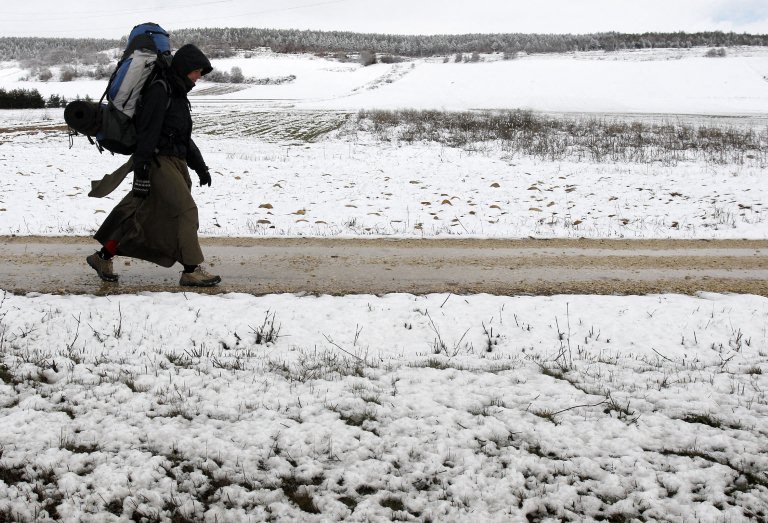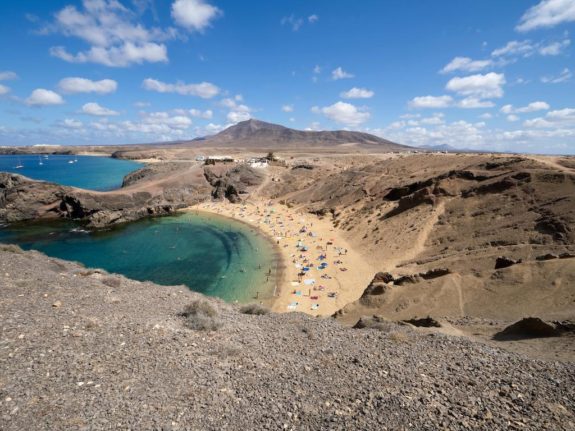You may be aware that most pilgrims usually do the Camino de Santiago over the summer months.
This is often characterised by early rises and long days spent sweating away under the summer sun. But in recent years a new trend has emerged: pilgrims taking on the trek during the colder winter in Spain.
READ ALSO: Top tips to safely enjoy Spain’s Camino de Santiago on foot or by bike
What is the Camino de Santiago?
El Camino de Santiago is a pilgrimage that leads to the shrine of the apostle Saint James in the cathedral of Santiago de Compostela in Galicia, north-western Spain, where many believe his remains are buried.
Nowadays many make the pilgrimage as a form of spiritual healing, be it for religious purposes or as a way of ‘resetting’ their busy lives.
It has become very popular with hikers and cyclists and organised tour groups and many people create their own personalised routes that end in Santiago de Compostela or earlier.
The traditional pilgrimage route runs from Saint Jean Pied de Port in France to Santiago de Compostela, is 765km long and takes most people around one month to complete on foot. There are of course several other main routes.
Although walking hundreds of kilometres might sound like something better suited to the drier summer months, in recent years more and more people are deciding to do it in the winter.
Winter Camino
Increasingly, these winter pilgrims are not just Spaniards but foreigners drawn to the reflective atmosphere of doing the trek in the quieter months when routes are more deserted.
New hostels (known as albergues) are popping up around the region to cater to this demand (often the weather means people take slightly different routes) and in 2023 staff have been surprised by the uptick in foreign pilgrims arriving in the Christmas holidays and winter months.

Workers at one new hostel told La Voz de Galicia that “the experience of these first months seems very positive, we have very good ratings from customers on social media and we already have some reservations for the summer.”
They also feel the winter Camino’s profile is growing, partly down to “good press” but also “by word of mouth… [that] is helping the ‘winter Camino’ to become more and more popular”.
Enrique Álvarez Barreiro, Mayor of Vilamartín de Valdeorras, a town where many pilgrims pass through, told the local paper about the trend: “I saw that the winter Camino is growing, that more pilgrims are arriving… and we hope the trend will continue in 2024.”
But is it worth doing the Camino de Santiago over the winter? How is it different from doing it in the summer?
What should you keep in mind, and what are the advantages and drawbacks?
PROS
There are fewer people
Many pilgrims who do the winter Camino report the route having a more intimate feel. With the number of pilgrims in the hundreds as opposed to thousands of people in the summer crowds, the experience becomes more personal in the quieter months.
Many report the winter Camino allows them to make deeper connections both with other pilgrims and the natural environment around them.
Winter landscapes
That in mind, doing the winter Camino means the landscapes are entirely different.
Now, this can be a pro or con depending on your point of view, but often the trails are snowy and produce some pretty breath-taking landscapes.
If you’re more of a winter person, the winter Camino might be for you.
More space in hostels, bars, restaurants
With significantly fewer pilgrims in the winter, not only are the routes quieter, but so are all the hostels, bars and restaurants along the way.
So are the check-in points where you get stamps to mark your journey. At the start of your pilgrimage, you can buy a ‘pilgrim’s passport’ in which you can collect stamps to track where you’ve been. Stamps can be found inside hostels and guesthouses, at local cafes, and inside churches along the route. They enable you to document your journey, and they’re essential to receive your certificate at the end of the route.
READ ALSO: The pros and cons of living in Spain’s Galicia
You can have a lie in
This depends if you’re an early bird or not, but the shorter, darker days you’ll experience on the winter Camino mean that many people take advantage of not having to get up early and therefore do shorter days, allowing you to rest and recover more.
The dark winter mornings allow pilgrims to wake up without a rush, and without the pressure of competing for space in the shelters or out on the trails.
The sun rises later, giving pilgrims a more relaxed and leisurely start to the day.

CONS
Weather
Obviously, if you do the Camino in the winter you risk running into some poor weather. As mentioned above, this can be a pro or con depending on your point of view, but keep in mind that Galicia (and northern Spain in general) does not have the mild winter months that the Mediterranean coast and southern Spain has.
When hiking such long distances, potentially adverse weather conditions are an important consideration to make. Cold temperatures, strong winds and snowfall or rain can make the journey more demanding, more dangerous and require more (or different) equipment and more careful planning.
For those winter Camino hikers who opt for the quieter time of year, this is compounded by the fact many travel alone, and that through the winter the roads and routes can become more treacherous.
Less light and time to walk
Again, this depends on your opinion, but by doing the winter Camino you’ll have less daylight hours and therefore less time to walk, meaning the Camino will probably take you longer than it would in the summer.
If you’re an early riser or want to do the Camino in a shorter time frame, doing it in winter might not be for you.
You need more gear
Due to the potentially tricky weather conditions, winter pilgrims need to take more gear with them (shoes, coats, hiking equipment to be properly prepared for all the Galician winter can throw at them) and therefore have to have a bigger backpack, something that could slow you down.
This might not sound like a huge problem, but if you’re hiking tens of kilometres a day, it’s worth keeping in mind.
More risks
Obviously, doing the Camino in winter could potentially be more dangerous.
The possibility of low temperatures (expect single figures, and even close to or below zero in more rural and mountainous areas) along with strong winds and snow storms can make the trek dangerous if you’re underprepared, get lost, or, as many winter pilgrims do, are doing it alone.
For people with little or no hiking experience, starting with the traditional summer Caminos might be a better idea to get the lay of the land.
Routes such as the Camino del Norte or Camino Primitivo may present additional challenges this season, so the so-called French Way or the Portuguese Way, with their better infrastructure and conditions are more suitable.



 Please whitelist us to continue reading.
Please whitelist us to continue reading.
Member comments